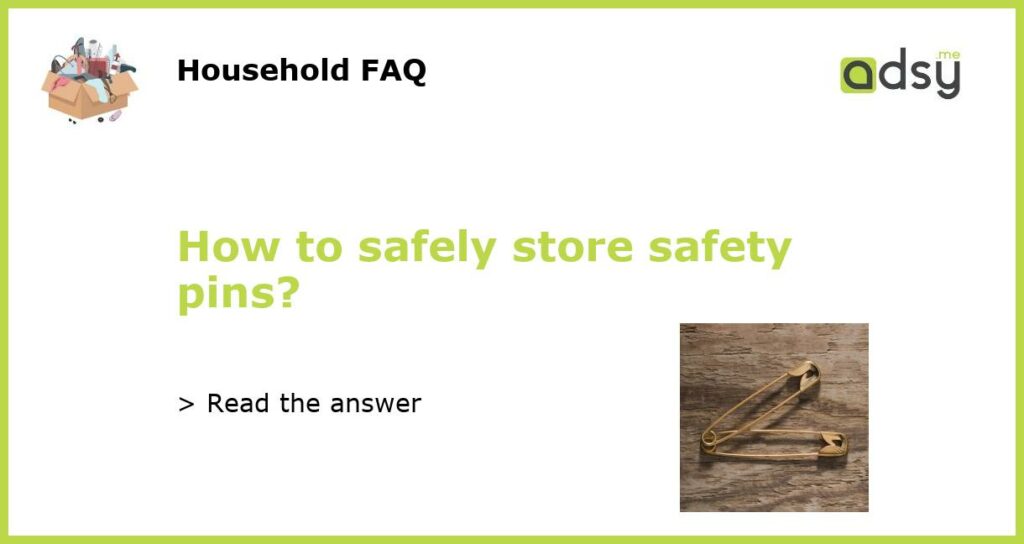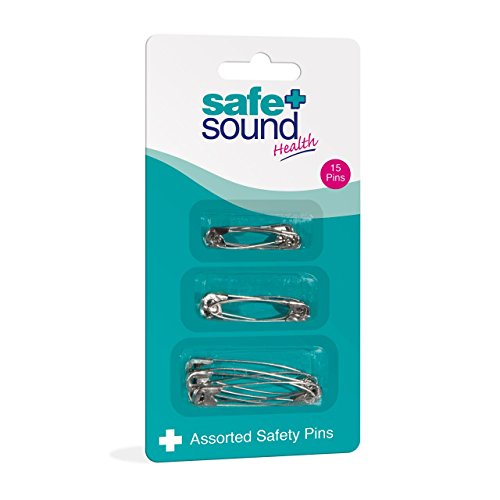The importance of safely storing safety pins
Safety pins are small but incredibly useful tools that can be found in most households. They are commonly used for sewing, fastening clothing, and even for various craft projects. However, it is important to store safety pins safely to prevent accidents and ensure their longevity.
Organizing safety pins for easy access
One of the key aspects of safely storing safety pins is organizing them in a way that allows for easy access while minimizing the risk of injury. Here are some suggestions on how to achieve this:
Container: Store your safety pins in a container that is specifically designed for small objects. A clear plastic container with dividers or compartments is ideal, as it allows you to see and access the pins easily.
Labeling: If you have multiple types of safety pins, consider labeling the compartments or dividers in your storage container. This will help you find the specific type and size of safety pin you need quickly.
Separation: Consider separating your safety pins based on their size, whether they are opened or closed, or even by color. This separation will not only make it easier for you to find the pin you need, but it will also reduce the risk of accidentally pricking yourself when searching for a pin.
Storing safety pins away from children and pets
When it comes to safely storing safety pins, it is crucial to keep them away from children and pets. Safety pins are sharp objects that can cause serious injury if mishandled. Here are some tips to ensure the safety of your loved ones:
Elevated storage: Store your safety pins in a location that is out of reach for children and pets. Consider using high shelves, locked drawers, or cabinets to keep them securely stored away.
Secure storage: If you have young children or pets who are particularly curious and may try to access areas they shouldn’t, consider using childproof locks on cabinets or drawers where you store your safety pins.
Teach safety: Educate children about the potential dangers of safety pins and the importance of not touching or playing with them. This can help reduce the risk of accidents if they come across a safety pin that has been left out or dropped.
Preventing rust and corrosion
Another aspect of safely storing safety pins is preventing rust and corrosion. Rust not only affects the appearance of the pins but can also compromise their functionality. Here are some tips to keep your safety pins rust-free:
Dry storage: Ensure that your safety pins are completely dry before storing them. Moisture can accelerate the rusting process, so it’s crucial to store them in a dry environment.
Silica gel packets: Place silica gel packets in your storage container to absorb any moisture that may be present. Silica gel is commonly found in packaging and can be reused multiple times.
Air circulation: Allow for proper air circulation around your safety pins to prevent the buildup of moisture. Avoid storing them in damp or humid areas, such as bathrooms or basements.
Regular maintenance and inspection
Safely storing safety pins also involves regular maintenance and inspection. By doing so, you can identify any pins that may be damaged or worn out and replace them to ensure your safety pins are in optimal condition. Here’s what you should do:
Check for damage: Regularly inspect your safety pins for any signs of rust, damage, or sharpness. If a pin is bent, has a dull point, or has become rusted, it is best to replace it.
Remove debris: Clean your safety pins periodically by removing any lint, thread, or other debris that may have accumulated on them. This will help prevent any buildup that could affect their functionality.
Proper disposal: If you come across a safety pin that is beyond repair or has become unsafe to use, dispose of it properly. Place it in a sealed container or wrap it with tape to prevent any accidental injuries.
By following these guidelines on how to safely store safety pins, you can ensure their longevity, prevent accidents, and keep your household safe. Remember to always prioritize safety when handling sharp objects such as safety pins.






